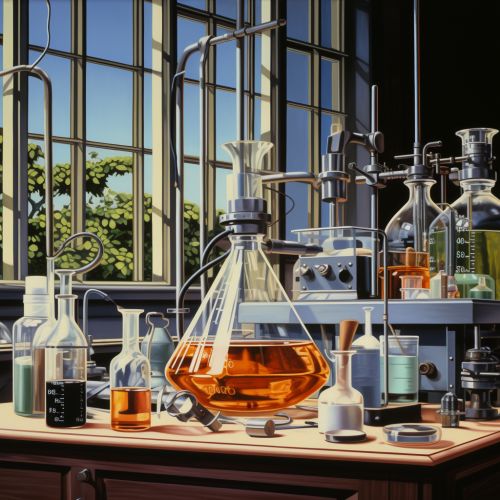Analytical Chemistry
Overview
Analytical chemistry is a branch of chemistry that involves the identification and quantification of chemical compounds. It can be divided into two main categories: qualitative analysis, which is concerned with identifying the chemical constituents of a substance, and quantitative analysis, which aims to determine the precise amount of a substance in a sample.
History
The roots of analytical chemistry can be traced back to the ancient civilizations of Egypt and Greece, where early chemists used simple analytical techniques to identify and quantify materials. However, it was not until the 17th century that analytical chemistry began to develop as a distinct discipline, with the work of scientists such as Boyle and Newton.
Techniques
Analytical chemistry employs a wide range of techniques, including spectroscopy, chromatography, and electrochemistry. These techniques can be used to analyze a variety of samples, from biological tissues to environmental samples.
Spectroscopy
Spectroscopy involves the interaction of light with matter. This can provide information about the structure and composition of a sample. There are various types of spectroscopy, including infrared (IR), ultraviolet-visible (UV-Vis), and nuclear magnetic resonance (NMR) spectroscopy.
Chromatography
Chromatography is a technique used to separate the components of a mixture. This is achieved by passing the mixture through a stationary phase, which interacts differently with each component, causing them to move at different rates and thus separate from each other.
Electrochemistry
Electrochemistry involves the study of chemical reactions that involve the transfer of electrons. This can be used to analyze the concentration of various ions in a solution, among other things.
Applications
Analytical chemistry has a wide range of applications, from medicine and biology to environmental science and forensics. It is used in the development and production of pharmaceuticals, the analysis of biological samples for diagnostic purposes, the monitoring of environmental pollutants, and the investigation of crime scenes, to name just a few examples.
Future Directions
The field of analytical chemistry is constantly evolving, with new techniques and technologies being developed all the time. These advancements are driven by the need for more accurate, sensitive, and rapid methods of analysis. Some of the current trends in analytical chemistry include the development of miniaturized and portable analytical instruments, the use of nanotechnology, and the integration of analytical techniques with computational methods.
See Also


